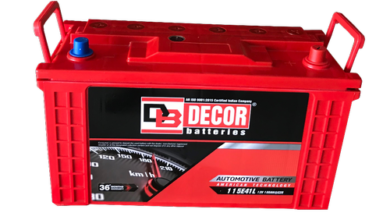What is industrial machinery?

The Industrial Equipment is defined as machines and equipment used by a manufacturer at a manufacturing plant. Another concept of machinery is any mechanical, electrical or electronic device designed and used to perform some function and produce a certain product.
Any complement or accessory necessary for the basic unit to fulfill its intended function is considered part of the machinery. The term also includes all devices used or necessary to control, regulate or operate a machine. Provided that such devices are connected to or are an integral part of the machine and are used to control, regulate or operate the machine.
Dies, dies, tools and other devices necessary. For the operation or used in conjunction with the operation of what would generally be considered machinery are also considered “industrial machinery”
Machinery does not include buildings designed to house machinery. In the same way, heating and air conditioning systems are not considered industrial machinery and equipment. Unless the only justification for their installation is to satisfy the requirements of the production process.
Brief history of industrial machinery
In principle the manufacture began with six simple machines: lever, wheel and axle, inclined plane, wedge, pulley and screw. It is true that it took several hundred years to go from the lever to the screw, but these six machines began to facilitate manual work and increase human productivity.
The current machinery comes from the innovations of the Industrial Revolution generated at the beginning of the 18th century. A historical invention that demonstrated the massive use of machines in our society is the steam engine.
First created in 1698 by British inventor Thomas Savery, the steam engine would later be developed by Thomas Newcomen, another British inventor, and James Watt, a Scottish engineer.
Steam engines provided enormous power and, unlike the horses that preceded them, did not need food or rest. The steam engine also transformed freight transport when, in the early 1800s, Robert Fulton invented the first steamship.
Before the Industrial Revolution, artisans made most items by hand as needed and transported them on carts if they were not used on site. Factory workers then produced items in bulk and transported them around the world.
Let’s take a look at the inventions of the past. Before the 19th century, the production of agricultural products. Such as wheat and corn, was severely limited by the agricultural devices available to farmers, which consisted mainly animal traction devices.
However,
The agribusiness underwent a major shift in production with the invention of the combine harvester around the 1830s.
These ingenious machines were capable of “cutting the grain stalks and at the same time separating the grain from the chaff,”. Greatly reducing the amount of time and equipment required to harvest the products.
The rate of collection and shipment of grain nationwide increased exponentially and the agricultural industry was forever revolutionized with creation.
Soon the commercial agricultural industry was dominated by the combine and farms across the country were teeming with them.
Some of the first industries affected were the textile, mining, glass and agricultural sectors. The spinning wheel and loom pushed cotton over wool as the main material in garment manufacturing, shortening. Both the actual production time and long-term growth cycles as farmers were able to plant and harvest cotton much faster.
Another important concept from the Industrial Revolution that increased the productivity of machinery and reduced downtime was that of interchangeable parts.
At the end of the 18th century. Honoré Blanc discovered that he could easily replace broken parts of his machinery by using uniform parts.
Eli Whitney, famous for his invention of the cotton gin , adapted this idea for the US Army muskets that.
He built following a directive from former President George Washington, introducing what is known as the ‘American system’ of mass production.
From the simple lever with which the equipment is operated to the standardized parts that are used for its repair. Much of the impetus for the improvement of the machinery had to do with the reduction of manual work.
Of course,
As machines became more complex, maintenance and repair also became increasingly expensive and difficult.
Looking for Ribbon blender mixer manufacturer in Bengaluru? Stalwart International is one of the best chemical process equipment manufacturer and suppliers in India.




